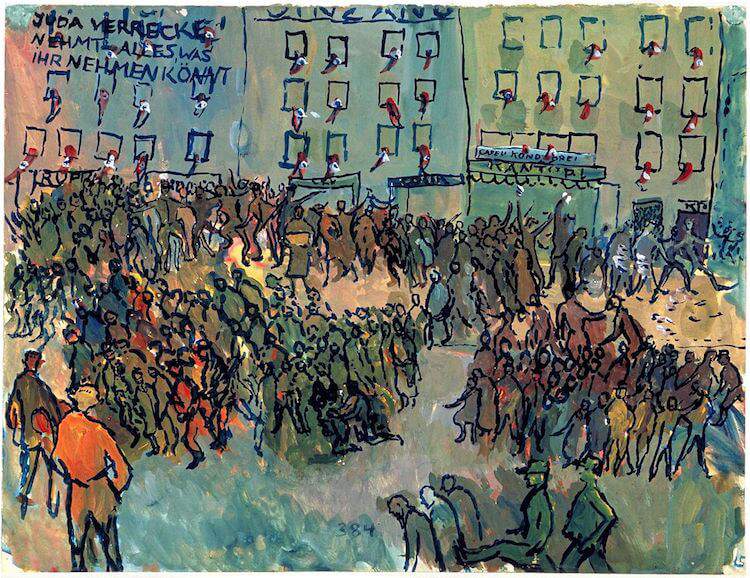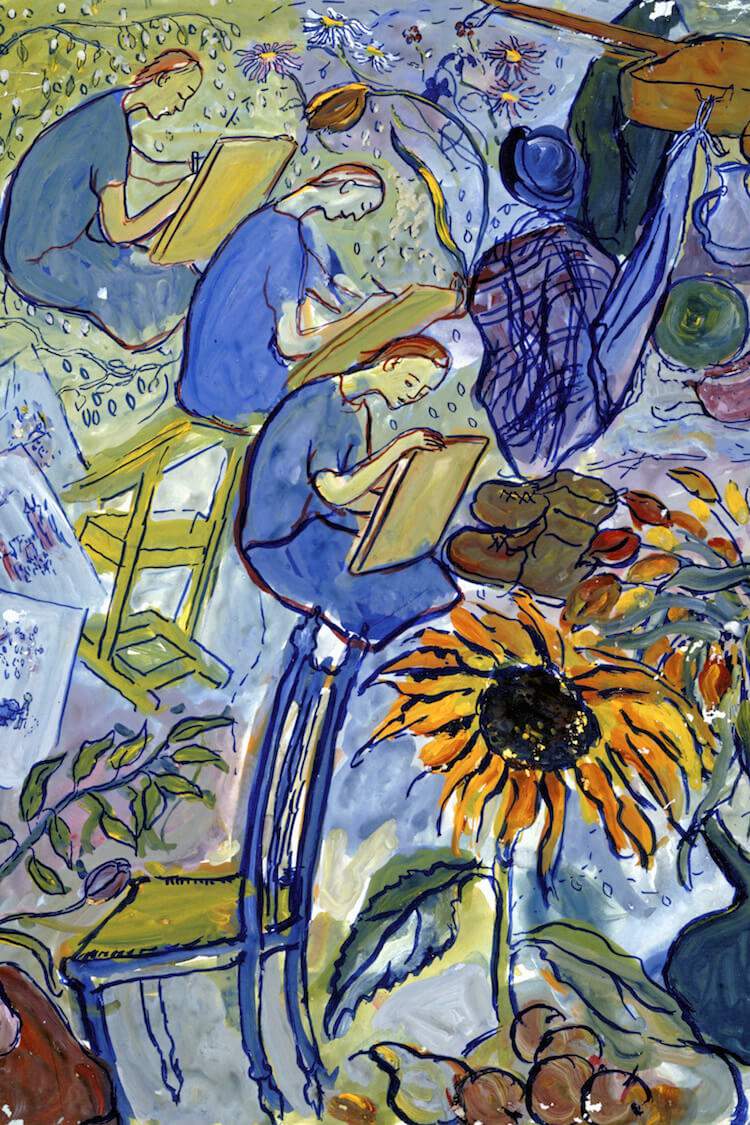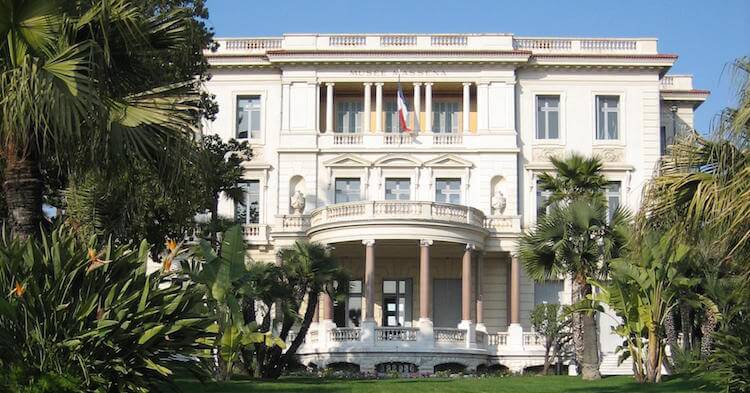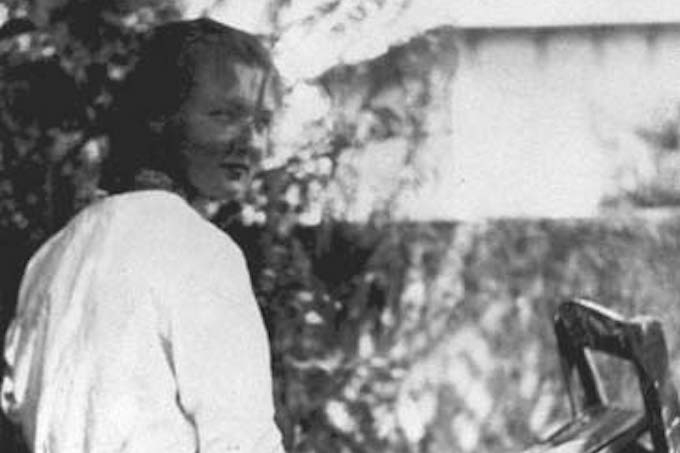All throughout 2016, the city of Nice will commemorate the dark years of World War II (1940-1944) with a wide and varied programme.
Included in the commemorations are ceremonies, tributes, meetings with personalities such as Serge Klarsfeld, as well as an incredible exhibit of no less than 300 pieces from Charlotte Salomon’s compelling artwork, Life? Or Theater? An Operetta. This will be a unique occasion to discover, or rediscover, the tragic tale of this young German artist who created her masterpiece right here on the French Riviera, while living as a refugee from Nazism.
Structured like a play and comprised of various scenes, dialogues and musical references, this massive work is a testament to Salomon’s unique artistic vision but also to her life, which started on the 16th of April, 1917 in Berlin. Born to Albert Salomon, a surgeon, and Fränze Grunwald, she was, despite her dad’s reluctance, named after her deceased aunt. When she was only nine, Charlotte’s mother committed suicide but in order to protect her from her maternal family’s terrible secret, the little girl was told she had died of influenza.

After the Nazis came to power in 1933, the young Charlotte had to drop out from school. She still managed however to get admitted to the prestigious State Art Academy in Berlin a few years later, which only allowed 1.5% of Jews. This is during that time that she met and fell in love with Alfred Wolfson, a Jewish musician twice her age, who became the first person to believe in her. But then came Kristallnacht in 1938 and Charlotte was sent to live with her maternal grandparents who had found refuge in l’Ermitage, a beautiful villa located in Villefranche, at the invitation of Ottilie Moore, a wealthy American of German origin.
The reprieve did not last long. Soon after she arrived, her grandmother committed suicide in 1940 and Charlotte finally learned the awful truth that had long been kept from her, that is that eight other members of her family, including her mother and aunt, had taken their own lives. Terribly distraught and convinced she would be next, the young woman then decided to break the vicious circle and “to paint her life rather than to take it.” To do so, she moved to Saint-Jean-Cap-Ferrat , and started working on her masterpiece in the gardens of the Hôtel Belle Aurore, overlooking the Mediterranean. In the space of two years, the young artist produced more than 1,370 notebook-size gouache paintings – only 795 were kept for the final version – with the bright colours used to recount her early life, darkening as the story moved along. To coordinate the various drawings, she included dialogues, at times witty, ironic or sad, to introduce the characters, scenes and situations, as well as some music, both classical (Schubert, Bizet…) and popular (famous German songs), anthems and even prayers. The project was finished in 1942 and if it may have been intended as a diary, the final result is first and foremost a spectacular and deeply moving piece of art.

In one of the latest captions accompanying her paintings, Charlotte wrote “I will live my life for them all.” She unfortunately never had the time. In September 1943, the Italians, who until then had occupied the south of France, surrendered and the Germans moved into Nice. Soon thereafter, Nazi war criminal Alois Brunner, a top aide to Adolf Eichmann, started organizing some of the war’s most violent raids and on September 24, 1943, Charlotte and her husband were arrested in Villefranche. Deported to Auschwitz, Charlotte who was four-month pregnant, was immediately sent to her death.
Her short legacy however did survive. Probably feeling she was in danger, Charlotte had indeed managed to entrust her work with her physician and friend, Dr. Moridis of Villefranche “Keep this safe. It is my whole life,” shortly after finishing it. Dedicated to Ottilie Moore, it was donated to the Jewish Historical Museum in Amsterdam by Charlotte’s father and stepmother after the war.
This museum is now lending all the pieces of art that will be on display from the 5th of February to the 24th of May at Musée Masséna. The vernissage will take place on the 4th of February at 7pm in the presence of Mayor Christian Estrosi and popular author David Foenkinos who recounted in 2014 the real life story of the painter in his book Charlotte.

CONTACT DETAILS
Charlotte Salomon Vie ? ou Théâtre ?
Musée Masséna
65, rue de France
06200 Nice
Open every day except Tuesday from 10 am to 9 pm
![]()
![]()
Lead image “Charlotte Salomon painting in the garden about 1939” by Unknown – Museum page. Licensed under Public Domain via Commons; “Charlotte Salomon – JHM 4762 -Kristallnacht” by Charlotte Salomon – Museum page. Licensed under Public Domain via Commons; “Charlotte Salomon – JHM 4351” by Charlotte Salomon – Museum page. Licensed under Public Domain via Commons; photo of Musée Masséna courtesy Ville de Nice



Leave a Reply